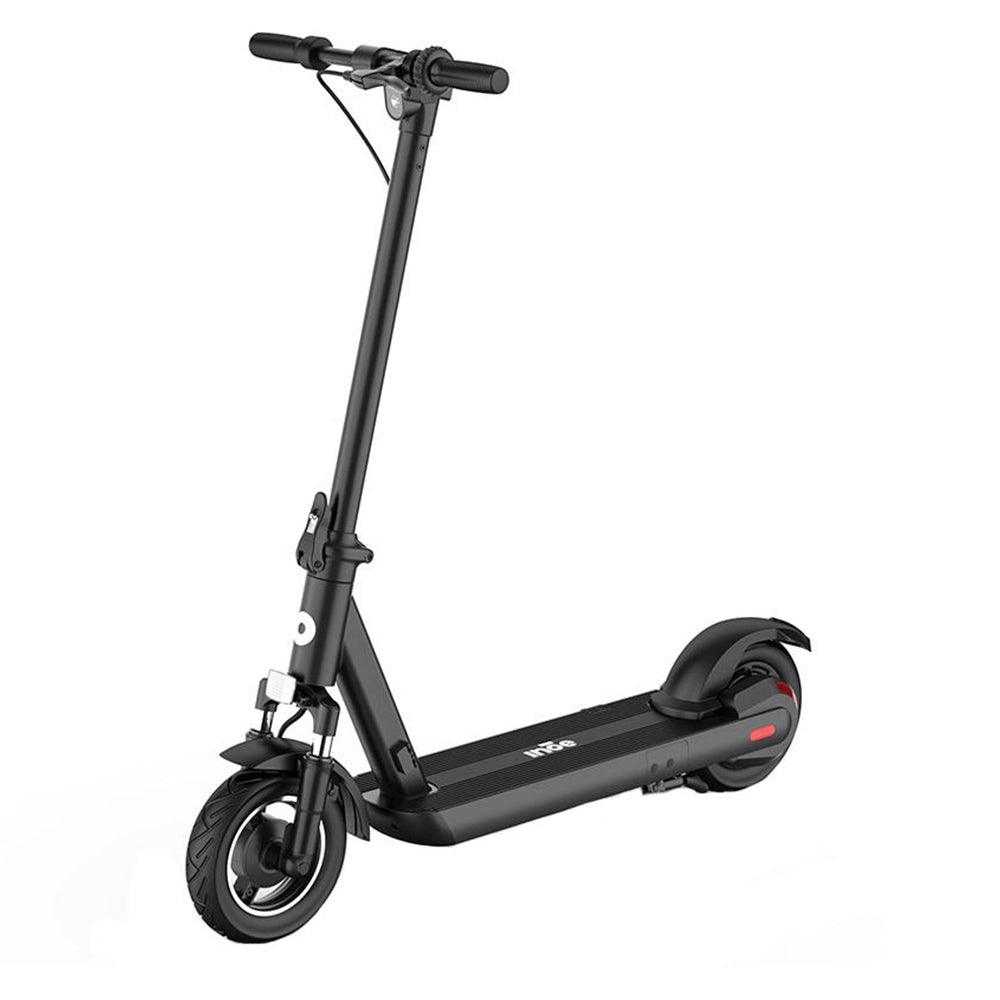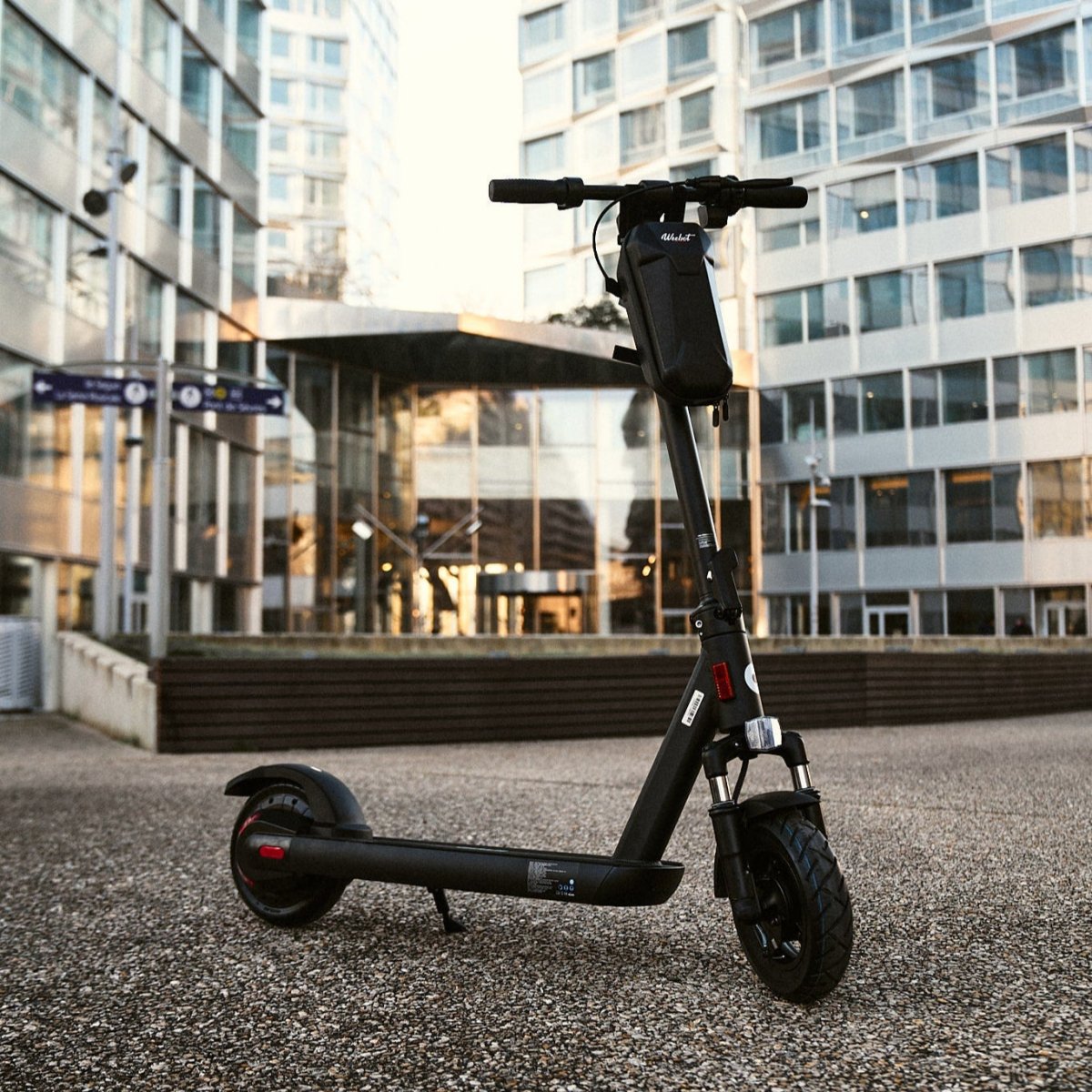Before choosing your scooter or electric bike, it is better to understand the technical characteristics that influence their behavior on the road. Among them, the volt plays a key role in the performance and autonomy of your vehicle. Speed, power on climbs, or endurance: everything is linked to this data. Weebot explains everything you need to know about volts and electric vehicles. Follow us!
Why is Volt so important for a scooter or an electric bike?
When talking about performance for an electric scooter or an electric bike, the volt is often mentioned, and for good reason. This technical data determines how your motor receives energy and directly influences power, acceleration, and speed. Explanations to understand well before buying!

Definition and role of the volt
The volt is the measure of the electrical tension passing through the motor of your scooter or electric bike. Imagine it as a pressure that pushes electrons and allows the motor to turn. The higher this pressure, the more power the motor can deliver instantly. In short, it determines the liveliness of your accelerations and your machine's ability to maintain a good pace uphill or under heavy loads.
Impact on acceleration and top speed
The number of volts directly affects the responsiveness and overall performance of your vehicle. A 48V motor will deliver more power than a 36V model, offering sharper accelerations and higher maximum speeds.
For example, the Garrett Miller Urban electric bike, at 36V, tops out at about 35 km/h, while its bigger brother, the Garrett Miller X, equipped with a 48V motor, easily exceeds 45 km/h and climbs hills without slowing down. So it is a decisive criterion to consider according to your needs and intended use.
Volt and autonomy: finding the right balance
Be careful, a higher number of volts does not necessarily mean more autonomy. On the contrary! While the voltage influences power, it is mainly the battery capacity and how these two elements are balanced that determine the actual distance you can travel.

How does the volt influence autonomy?
The volt, combined with the battery capacity expressed in ampere-hours (Ah), allows you to know the total available energy, measured in watt-hours (Wh).
The formula is simple: Volt × Ah = Wh. Let's take a concrete example: the Garrett Miller X carries a 48V 15Ah battery, which is 720Wh of energy.
This data is essential because it determines the number of kilometers you can travel before recharging. But be careful, a more powerful motor also consumes more, which can reduce autonomy if the battery is not sized accordingly.
Does a 48V electric scooter or bike consume more?
Yes... if the system is poorly balanced! A 48V motor delivers more power, but that also means it can consume the battery energy faster. The important thing is to ensure the battery capacity keeps up, otherwise performance will quickly eat into autonomy. To avoid unpleasant surprises, choose a model with a good voltage/capacity ratio, and adapt your driving: limit sudden accelerations and monitor tire pressure to optimize every kilometer.
Which voltages for which uses?
Before getting your future scooter or electric bike, choose the right voltage according to the use you plan. Indeed, each type of trip and terrain requires appropriate power. A hurried city dweller will not have the same needs as a fan of hikes or long weekend rides. Here is what you need to know to choose well.

For the city and short trips
If you mainly move around the city, to go to work or do your shopping, a 36V motor is more than enough. It offers comfortable power for urban areas, where speed limits and distances remain moderate.
For example, the Weebot Anoki S electric scooter stands out for its lightness, compactness, and excellent value for money. Designed for daily trips, this 36V electric scooter combines practicality and performance for users looking for a reliable and agile model in urban environments.
The Granville E-Integrated city electric bike is also an urban and robust vehicle suitable for this use.
For long rides and difficult terrains
If you are more the type to explore the outskirts of the city or face steep paths, you will need to bet on a 48V motor.
This higher voltage offers sharper acceleration and better hill-climbing ability. The Garrett Miller X, for example, is a 48V electric bike designed for long distances and steep slopes. The same goes for the 48V electric scooters available at Weebot (Segway ZT3 Pro, Navee S60, etc.), ideal for those who want to go off the beaten path without compromising on performance.
Voltage and motor types: understanding the interaction between voltage and performance
Not all motors react the same way depending on the volt level. A brushless motor, a hub motor integrated into the wheel, or a crank motor each manages the electrical power in volts transmitted by the high-voltage battery differently. Here is what you need to know to choose a coherent and efficient system.

Brushless, hub, or crank: motors that react differently to voltage
Voltage in volts directly influences how each type of motor delivers power. A brushless motor, for example, is often very efficient because it loses little energy through friction.
On a hub motor (integrated into the wheel), the response to voltage level is more direct: a 48-volt system will thus offer higher torque and better responsiveness than an equivalent 36-volt model.
As for crank motors, often reserved for high-end electric bikes, they benefit more from a high-voltage battery because they use torque sensors that dynamically adjust the electrical power in volts according to the effort provided by the cyclist.
Which volt for which motor? Comparative table
Here is a summary table to visualize the interaction between motor type and voltage level (36V or 48V):
|
Motor type |
Responsiveness with 36 volts |
Responsiveness with 48 volts |
Ideal for... |
|
Hub motor |
Sufficient for the city |
Excellent responsiveness and better top speed |
Urban or suburban trips |
|
Brushless motor |
Good efficiency at all voltages |
Optimized for consistent performance |
Versatile daily use |
|
Crank motor |
Less common at 36V |
Very efficient with high-voltage battery |
Electric mountain bike, long distances, rough terrain |
Each system has its advantages, but to fully benefit from a crank motor or a powerful hub motor, a high-voltage 48-volt battery is often recommended.
Choosing a coherent set: motor, voltage, and battery
The best choice remains the one that ensures a good balance between electrical power in volts, motor type, and battery capacity. A high-performance 48-volt motor coupled with a well-sized battery (e.g., 48V 15Ah) will offer optimal efficiency without sacrificing autonomy.
On the other hand, a motor that is too powerful powered by a small, poorly calibrated high-voltage battery risks depleting the available energy too quickly.
Weebot electric scooter and bike models by voltage
At Weebot, you will find models suitable for all uses and desires, depending on the voltage you need. Whether you are a city dweller looking for an electric two-wheeler for your daily trips or an adventure lover in nature, each range is designed to offer you the best possible experience.
36V models at Weebot
For urban travel and short daily trips, Weebot offers several 36V models. This is the case with the Garrett Miller Urban, a compact and agile electric bike, perfectly at ease in city traffic. It stands out for its great maneuverability, ideal for avoiding traffic jams and moving effortlessly from one appointment to another. Added to this are lightweight and foldable electric scooters, specially designed for urban mobility and multimodal trips.
48V and above models at Weebot
For those seeking more power and endurance, Weebot also markets a wide range at 48V and beyond. The Garrett Miller X is the perfect example: designed for long rides and rugged terrain, it offers remarkable performance and great autonomy. On the scooter side, the 48V models in the store are intended for thrill seekers and off-road routes, offering sharp acceleration and better hill performance.
Frequently asked questions about volts and electric vehicles
Still hesitating between 36 volts or 48 volts? Don't know how to interpret technical data like voltage in volts, electrical power, or battery capacity? Don't panic. Here are answers to the most frequent questions to better understand the role of volts and make the right choice according to your needs.

What is the best volt for an electric bike?
There is no single answer: it all depends on your use. A 36-volt electric bike will be perfect for urban and flat trips. If you want more power to climb hills or take long rides, a 48-volt model with a high-voltage battery will be more suitable. This voltage level allows better motor efficiency and sharper acceleration.
Is 36V enough for an electric scooter?
Yes, for typical urban use. A 36-volt electric scooter generally offers enough electrical power in volts for short or moderate trips, with good autonomy. However, if you want more responsiveness at start or to face slopes, a 48-volt model will be more powerful, provided it has a suitable battery.
Volt or ampere-hours: which to prioritize?
Both are essential and must be balanced. Volt (voltage) determines instantaneous power, while ampere-hours (Ah) indicate energy storage capacity. The ideal is to look at watt-hours (Wh), obtained by the formula: Volt × Ah = Wh. A good compromise between voltage in volts and battery capacity ensures both solid performance and comfortable autonomy.
Conclusion
To fully enjoy your scooter or electric bike, the choice of voltage should not be taken lightly. It determines not only your acceleration and performance but also your autonomy and comfort depending on your trips. A 36V model will be perfect for urban travel, while a 48V will be more comfortable on long rides and difficult terrain. At Weebot, you will find a wide selection adapted to every need. Do not hesitate to consult the complete technical sheets to compare and find the perfectly calibrated model for your daily life.



